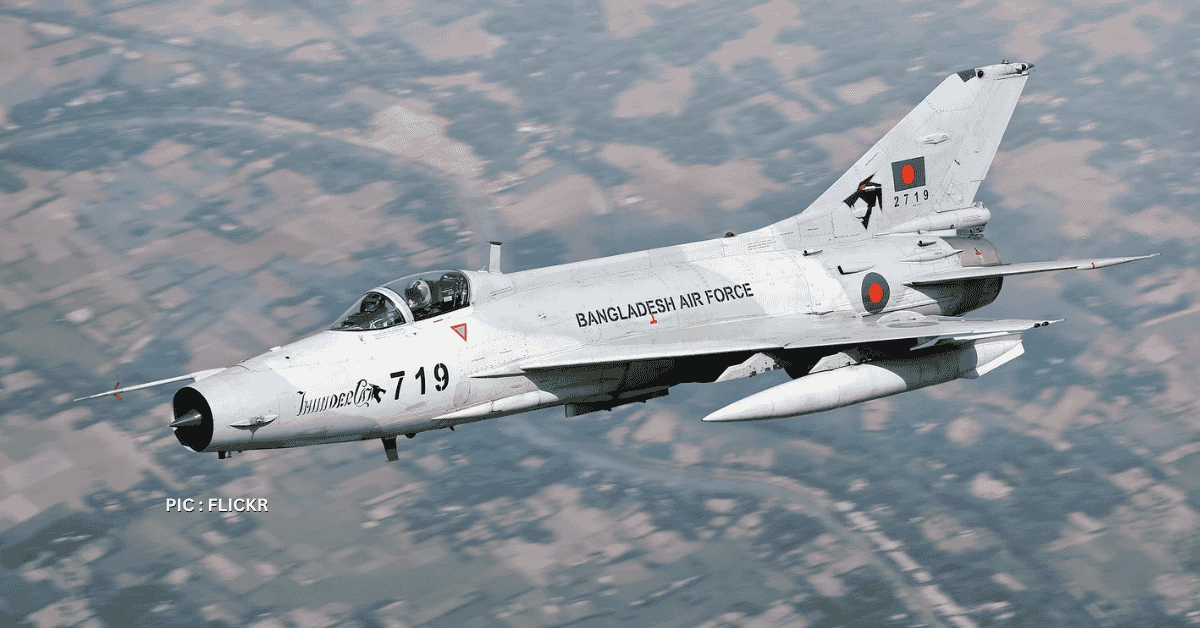The tragic crash of a Bangladesh Air Force (BAF) F-7BGI jet into a Dhaka school campus on July 21, 2025, was a national catastrophe that claimed the lives of at least 19 people, many of them children, and left over 100 injured. While the immediate horror of the event captured headlines, a deeper look reveals that this was not an isolated incident. Instead, it appears to be a symptom of long-standing, systemic safety issues within the BAF.
This analysis goes beyond the initial reports to explore the pattern of accidents, the technology involved, and the institutional factors that may contribute to these recurring tragedies.
A National Tragedy: The Milestone College Crash
What Happened on July 21st?
On a Monday afternoon, a routine training mission turned into a disaster when a BAF Chengdu F-7BGI fighter jet crashed directly into the campus of Milestone School and College in Uttara, a densely populated area of Dhaka. The aircraft, which had taken off just minutes earlier, struck a building housing primary school classes and the school canteen during lunchtime, a time of maximum vulnerability. The resulting explosion and fire caused immense devastation and chaos, sparking a massive emergency response.
The Devastating Human Cost
The true scale of the tragedy became clear as casualty numbers rose from initial reports of one death to at least 19, with more than 100 people injured. The victims were overwhelmingly civilians, with young students bearing the brunt of the impact. Hospitals were flooded with patients, mostly children, suffering from critical burn injuries, prompting public appeals for blood donations. The head of Bangladesh’s interim government, Muhammad Yunus, declared the loss “irreparable” and announced a day of national mourning.
The F-7BGI: A Modern Jet with a Vintage Heart
A Risky Combination
The aircraft at the center of the disaster, the Chengdu F-7BGI, is an export version of a Chinese jet that is itself a derivative of the 1950s-era Soviet MiG-21. While the BAF’s variant features modern upgrades like a digital “glass cockpit,” it is fundamentally a 3rd generation airframe with 4th generation electronics. This creates a paradox: the modern interface can mask the aircraft’s older, less forgiving flight characteristics. The F-7 family lacks the automated fly-by-wire controls that are standard in modern fighters, placing an immense burden on pilot skill, especially during an emergency.
A Pattern of Crashes
The July 2025 incident was not the first for the BAF’s F-7 fleet. Another F-7 crashed into the Bay of Bengal just weeks earlier, at the end of June 2025, and another was lost in 2018. This recurring loss of the same aircraft type points toward a persistent problem that transcends a single incident.
Is This an Isolated Incident? A Look at the BAF’s Safety Record
A review of the BAF’s history reveals a troubling safety record that extends beyond the F-7 fleet, affecting even its most modern aircraft.
Problems Across the Fleet
The BAF’s fleet of modern Yakovlev Yak-130 advanced trainers has also suffered multiple accidents. A May 2024 crash killed a pilot, marking the fourth loss of a Yak-130 since its induction, a list that includes a dramatic mid-air collision between two of the jets in 2018. These incidents show that the safety issues are not confined to older, legacy airframes.
The Ejection Paradox: When the Escape System is a Gamble
Perhaps the most alarming statistic comes from a 30-year study (1982-2012) of BAF fighter ejections published in the Journal of Armed Forces Medical College, Bangladesh. The study found a pilot fatality rate of over 43% in ejection cases. An ejection seat is a pilot’s last resort; a system that fails in nearly half of its uses indicates a catastrophic systemic failure.
The study detailed horrific injuries even in fatal cases, with 100% of deceased pilots suffering from head injuries and severe spinal fractures. This suggests potential issues with aging equipment, maintenance, or inadequate training on how and when to eject safely.
Uncovering the Root Causes of BAF Air Disasters
Fleet Management and Training Gaps
The BAF operates a diverse fleet of aircraft from different countries and technological eras, which can complicate maintenance and training standardization. While the BAF has a modernization plan, “Forces Goal 2030,” the continued accidents with both old and new aircraft raise questions about the effectiveness of current training and maintenance protocols.
The Critical Need for Transparency
Following crashes, the BAF routinely announces that an investigation has been formed. However, there is a near-total absence of publicly available final reports from these military investigations. This stands in contrast to the civilian aviation sector, where detailed reports are often published to identify causes and prevent future accidents. This “culture of silence” prevents public accountability and, more importantly, hinders the organizational learning required to fix systemic safety flaws. An organization that does not transparently confront its failures is doomed to repeat them.
The Path Forward: How to Prevent the Next Bangladesh Air Force Crash
The Milestone College tragedy must serve as a catalyst for fundamental change. Preventing the next Bangladesh Air Force crash requires addressing both technical and institutional failures.
Technical and Training Overhauls
Immediate steps should include a comprehensive safety audit of high-risk fleets like the F-7 and Yak-130, as well as a complete review of all ejection seat systems. Pilot training for emergency procedures, especially for legacy aircraft and timely ejections, must be revamped and intensified with realistic simulations.
Why Public Accountability is Non-Negotiable
The single most critical step the Bangladesh Air Force can take is to adopt a policy of transparency. Publishing public, redacted versions of accident investigation reports is standard practice in many of the world’s safest air forces. This fosters a proactive safety culture, ensures accountability, and rebuilds the public trust that was shattered on July 21st. Without this foundational change, the risk of another preventable tragedy remains unacceptably high.
Grounded by a Glitch: The Real Reason Behind the Alaska Airlines Shutdown


1 thought on “Bangladesh Air Force Crash : 19 Dead, Over 100 Injured as Jet Hits Dhaka School”
Comments are closed.